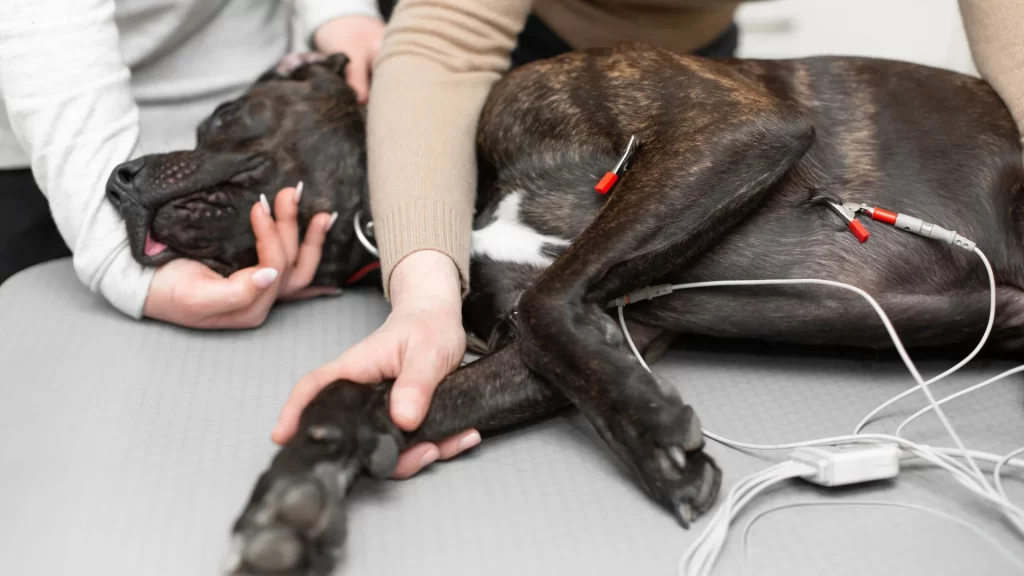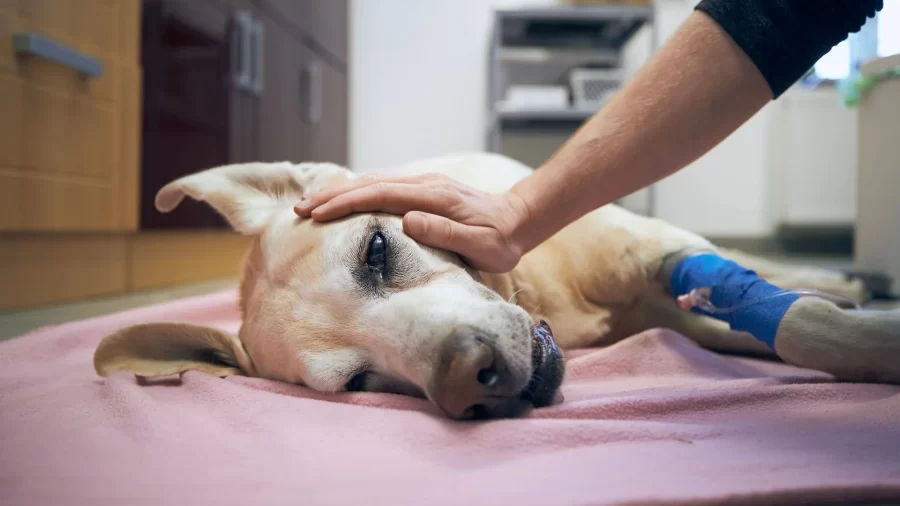Can you do CPR on a dog? Absolutely, and when done right, CPR for dogs can save your furry friend’s life.
Pets are cherished members of our families, and when emergencies strike, it’s crucial to be prepared to provide life-saving assistance. One such critical skill is the ability to perform CPR (Cardiopulmonary Resuscitation) on a dog.
While the thought of a beloved canine companion in distress can be daunting, understanding the proper techniques and when to apply them can mean the difference between life and tragedy. In this comprehensive guide, we’ll delve into the intricacies of dog CPR, equipping you with the knowledge and confidence to act swiftly and effectively in the face of a canine emergency.
What are the ABCs of dog CPR?

Canine CPR is a lifesaving procedure that can be used to revive a dog when their heart has stopped beating or they have stopped breathing. It involves a combination of chest compressions and rescue breaths to keep blood and oxygen circulating throughout the body.
Just like their human counterparts, when a dog’s heart stops or they stop breathing, it can lead to a rapid drop in oxygen levels, potentially causing organ failure and brain damage. Prompt and proper CPR can be the difference between life and death for a furry friend.
Is it worth doing CPR on a dog?
The first step in administering dog CPR is determining if it is necessary. It’s crucial to assess the dog’s condition and ensure that CPR is the appropriate course of action. Signs that a dog may require CPR include:
- Unresponsiveness or unconsciousness
- Lack of breathing or labored breathing
- Absence of a detectable heartbeat
It’s important to note that CPR should not be performed on a healthy dog or one whose heart is still beating, as it could cause serious harm or even death.
How do vets do CPR for dogs?
Before beginning CPR for dogs, it’s essential to ensure that the environment is safe and conducive to the procedure. This includes:
- Securing the area to prevent further injury or disturbance.
- Clearing the dog’s airway of any obstructions.
- Place the dog on a flat, firm surface, such as the floor or a table.
- Ensuring that you have someone nearby to call for emergency veterinary assistance.
How do you perform CPR on a dog?
So how do you give CPR to a dog?
Once you have assessed the situation and prepared the environment, you can begin the CPR process. Follow these step-by-step instructions:
Step 1: Check for Responsiveness
Gently call out to the dog and try to elicit a response. If the dog does not respond, proceed to the next step.
Step 2: Open the Airway
Carefully open the dog’s mouth and check for any obstructions in the throat. If you find an obstruction, follow the appropriate first aid procedures to remove it.
Step 3: Check for Breathing
Observe the dog’s chest for any signs of breathing. If the dog is not breathing, move on to the next step.
Step 4: Check for a Heartbeat
Place your hand on the left side of the dog’s chest, just behind the elbow, to feel for a heartbeat. If you cannot detect a heartbeat, begin chest compressions.
Step 5: Perform Chest Compressions
- For small dogs (under 5 kg): Wrap your hand around the dog’s chest, with your thumb on top and your fingers underneath. Compress the chest by one-third to one-half its depth, at 100-120 compressions per minute.
- For medium to large dogs: Sit behind the dog and place both hands, interlocked, on the widest part of the chest. Compress the chest by one-third to one-half its depth, at 100-120 compressions per minute.
- For deep-chested dogs (such as Greyhounds and Great Danes): Sit behind the dog and place both hands, interlocked, directly over the heart. Compress the chest by one-third to one-half its depth, at 100-120 compressions per minute.
- For flat-chested dogs (such as British Bulldogs): Place both hands directly on the midpoint of the chest and compress by one-third to one-half its depth, at a rate of 100-120 compressions per minute.
Step 6: Provide Rescue Breaths
- For small dogs (under 5 kg): Wrap your mouth around the dog’s nose and mouth, creating an airtight seal. Give two rescue breaths, watching for the chest to rise and fall.
- For medium to large dogs: Extend the dog’s neck and form an airtight seal around the dog’s nose with your mouth. Give two rescue breaths, watching for the chest to rise and fall.
Step 7: Repeat Compressions and Breaths
Continue the cycle of 30 chest compressions followed by two rescue breaths, repeating this pattern until the dog starts breathing on their own or you reach a veterinary facility.
Step 8: Monitor and Transport
If the dog starts breathing on their own, monitor their condition and transport them to the nearest veterinary clinic immediately. If the dog remains unresponsive, continue CPR while arranging for emergency transport.
What is the success rate of CPR for dogs?
It’s important to understand that CPR may not be appropriate or successful in all situations. If the dog has severe injuries, an underlying health condition, or has been in cardiac arrest for an extended period, the chances of successful resuscitation may be low. In these cases, continuing CPR may not be the kindest option and it’s essential to consult with a veterinarian to determine the most appropriate course of action.
How to give a dog CPR if Choking, Bleeding or has Heatstroke.
In addition to CPR, other first aid techniques can be helpful in emergencies:
Heimlich Maneuver for Choking
If a dog is choking and unable to breathe, you can perform a modified Heimlich maneuver by applying pressure to the rib cage to dislodge the obstruction.
Controlling Bleeding
For external bleeding, apply direct pressure to the wound and elevate the affected limb to help slow or stop the bleeding.
Treating Heatstroke
Move the dog to a shaded area, place cool (not cold) wet towels on their body, and provide small amounts of cool water to drink.
Preparing for Emergencies; Pet CPR Certification
The best way to ensure you are prepared to handle a canine emergency is to take a dog CPR course and have a well-stocked pet first aid kit on hand. These resources can provide you with the knowledge and tools needed to act quickly and effectively in a crisis.
Conclusion
Mastering the skill of dog CPR is a crucial step in being a responsible and caring pet owner. By understanding the proper techniques, recognizing the signs of distress, and knowing when to seek professional help, you can be the difference between life and tragedy for your beloved canine companion. Remember, the time to prepare for an emergency is before it happens, so take the time to educate yourself on cpr for dogs and be ready to act when it counts the most.
Edward Perez is a dog expert with over 20 years experience.

